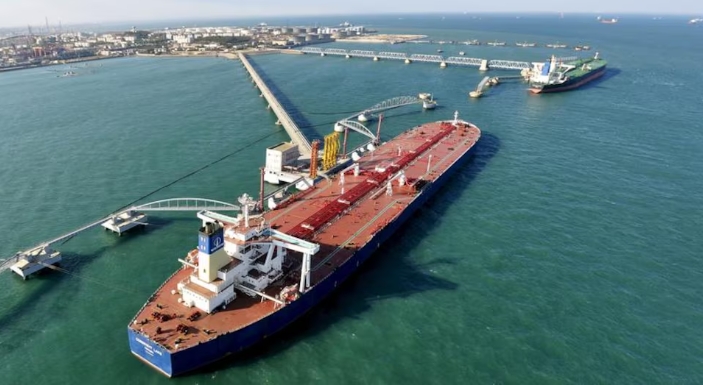
The world's top importing region is forecast to see arrivals of 27.48 million barrels per day (bpd) in March, up from 26.70 million bpd in February and January's 27.18 million bpd, according to data compiled by LSEG Oil Research.
The bulk of oil arriving in March was arranged before the current increase in prices, which has seen Brent move from a six-month low in December to trade above $80 a barrel since early February.
The rebound in imports is being driven by China, the world's biggest crude buyer, which is forecast to have arrivals of 11.75 million bpd in March, up from February's 11.16 million bpd and 10.44 million bpd in January.
India is also chipping in to stronger demand, with imports expected to reach 4.93 million bpd, up from February's 4.55 million bpd and in line with January's 5.06 million bpd.
China's imports have been boosted by refiners likely increasing throughput to build up inventories of fuel ahead of the maintenance season that normally runs from late March through to early June.
As much of 800,000 bpd of refining capacity is likely to be offline at some point during this time, according to LSEG data.
This raises the possibility that China's crude imports may moderate during the maintenance season, but much will depend on whether the tentative signs of economic recovery in the world's second-biggest economy continue to appear and accelerate.
It's also worth noting that China's strong crude imports in the first quarter would have been secured at a time when global oil prices were below the current levels.
Cargoes arriving in the first quarter would have largely been arranged in the fourth quarter of last year.
Benchmark Brent futures dropped to $72.29 a barrel on Dec. 13, the lowest since June, having been on a downward trend since the 2023 peak of $97.06, reached on Sept. 27.
Since the December trough, Brent has shifted higher, closing at $86.09 a barrel on Wednesday.
It's possible that China's refiners may ease back on imports given the higher prices of recent weeks, turning toward their ample inventories, which they continued to add to in the first two months of 2024, with available crude exceeding refinery throughput by 570,000 bpd.
Chinese refiners have also continued to favour Russian crude, with seaborne and pipeline arrivals expected at 2.44 million bpd in March, up from 2.19 million bpd.
Imports from Saudi Arabia likely remained steady at 1.60 million bpd in March.
 Asia crude oil imports vs Brent price
Asia crude oil imports vs Brent price Asia crude oil imports vs Brent price
INDIA IMPORTS
India also kept imports of Russian crude elevated, with arrivals of 1.50 million bpd estimated for March, an eight-month high and up from February's 1.36 million bpd.
Russian flows to India have been boosted by increased availability of crude for export in the wake of Ukrainian drone attacks on Russian refineries.
However, there is a question mark over the outlook for coming months as some Indian refiners have stopped accepting cargoes transported by Russia's state-owned Sovcomflot in order to comply with new U.S. sanctions against Moscow.
It's likely that India will import from U.S. crude if arrivals from Russia are cut by renewed sanctions, as U.S. oil is still cheaper than Middle East grades even allowing for higher freight costs.
Asia's refiners are struggling with falling margins as higher crude prices aren't matched by rising prices for refined fuels.
The profit for processing a barrel of Dubai crude at a typical Singapore refinery dropped to $5.43 a barrel on Wednesday, and it has been trending weaker since the high so far in 2024 of $9.91 on Feb. 13.
The squeeze on margins means refiners will seek cheaper crudes, such as those priced against Brent or U.S. West Texas Intermediate, as opposed to those linked to more expensive Middle East grades.